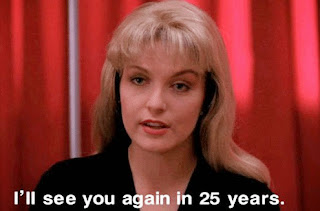 |
| The hills are alive with the sound of Christmas. |
The funny thing is, "My Favorite Things" isn't really a Christmas song.
Yes, the song uses lots of wintertime imagery, such as sleigh bells and snowflakes. It also invokes ponies, kittens and bees. No matter how you look at it, "My Favorite Things" doesn't have anything to do with Christmas. Nor, for that matter, does it have anything to do with Hanukkah, the solstice or Kwanzaa. It has no part in a Festivus for the rest of us.
To this day, the best version of "My Favorite Things" remains the 13-minute tour de force of modal jazz improvisation that John Coltrane released in 1961. No one mistakes it for a Christmas song.
None of that, however, has kept other versions out of the annual Christmas rotation.
It's not unlike how "Die Hard" has become a Christmas movie, even though the only part of the plot that's Christmas related is the office Christmas party. A good screenwriter could easily come up with a plausible substitute, and a bad screenwriter could come up with a dozen implausible ones.
For the why of it all, I turned to Wikipedia, which as everyone knows is a wholly reliable source of information and not just a convenient way to settle bar bets.
There I learned Julie Andrews performed "My Favorite Things" during the 1961 Christmas episode of "The Garry Moore Show," a variety program today best remembered for helping give Carol Burnett her start in television. Evidently, "The Garry Moore Show" also gave "My Favorite Things" its start as a Christmas song.
Soon afterward, the song began appearing on Christmas albums, and it has been doing so ever since. The earliest example Wikipedia cites is 1964's "The Jack Jones Christmas Album," where it is performed by "Love Boat Theme" crooner Jack Jones.
A year later, it was everywhere, and by "everywhere" I mean it appeared on a Diana Ross and the Supremes album titled "Merry Christmas," an Andy Williams album titled "Merry Christmas," and an Eddie Fisher album titled, for a change of pace, "Mary Christmas."
So, when it comes to stamping the label "Christmas music" on "My Favorite Things," there is a lot of credit — or blame, depending on your point of view — to go around. Like Carrie Fisher and Debbie Reynolds, I put most of the blame for everything bad on Eddie Fisher.
He was a real piece of work.
Not that "My Favorite Things" is a bad Christmas song, despite its not being a Christmas song at all. There certainly are worse Christmas songs, most of which get a lot more airplay.
Despite their best efforts, not even the unlikely pair of Bing Crosby and David Bowie can do much with the soul-crushing monotony of "The Little Drummer Boy." And when it comes to maddening repetition, it's hard to top José Feliciano's novelty hit "Feliz Navidad."
Still, neither of those songs is the worst. When it comes to bad Christmas songs, ex-Beatles are experts. No one could turn noble sentiments into saccharine sentimentality faster than John Lennon during his Plastic Ono Band phase, and "Happy Xmas (War Is Over)" is Exhibit A, co-produced by convicted murder Phil Spector, who currently is serving 19 to life. But worse still is Paul McCartney's "Wonderful Christmastime," which isn't so much a song as it is the sound of joy dying.
Yet even John and Paul can't top the sheer awfulness and condescension of Bob Geldof and Midge Ure's patronizing famine-relief fundraiser "Do They Know It's Christmas?"
The answer, Bob, is "yes." People in Africa might be starving, but they're not stupid. They know when it's Christmas. I suspect some even know when it's Boxing Day.
Compared to all that rot, "My Favorite Things" isn't bad at all, even if it's a Christmas song that's not really a Christmas song.




















%2B01.jpg)




